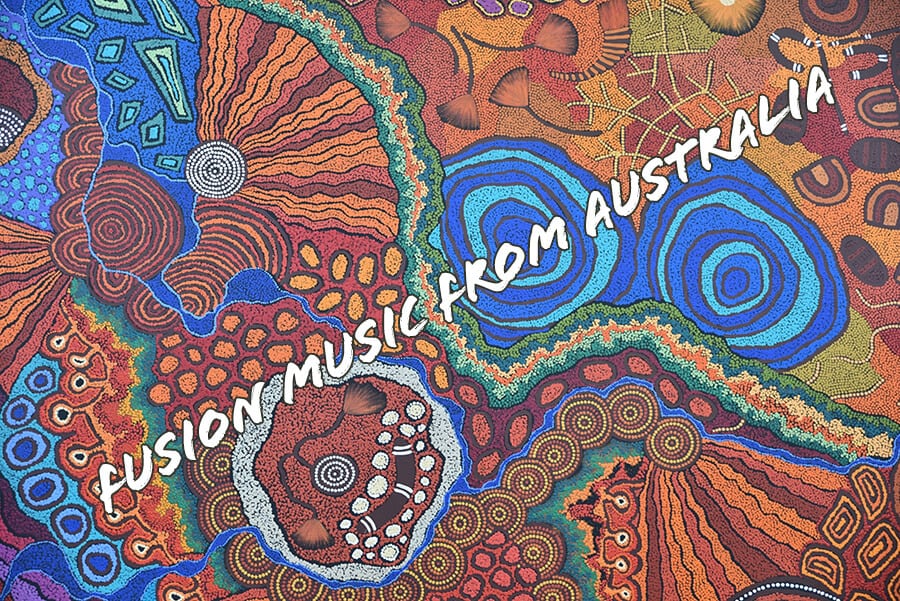The incredibly vibrant people of Australia exude an intriguing, inviting nature. Through the depiction of Australia in the macro media, many foreign eyes are uneducated about some of the things that identify the culture of the continent. From fashion to food, from visual art to dance, the history of the indigenous people resembles an important role for nationality recognition. Through the music world, Australia has developed an increasingly dependable sound, having a full form of musical history through Folk Rock and Bush music.
Okay, forgive me for my stereotypical nature but Crikey! I do not know much about the interesting polarizing part of the earth, Australia. There was a time I could depend on the decade worth of research done through the television show, “The Crocodile Hunter”. Set in Australia, Steve Erwin would wrestle the ginormous, monstrous, flesh-eating crocodile with the palm of his hands.
As he regurgitated fun facts about the unique reptile, my view of Australia seemed unrelatable. The animalistic nature made me feel distant from the other side of the world, where Australia rests its bountiful head. Judging from my boyish mindset, the culture of Australia seemed like a paradox in both good and bad. My faint memory of my Australian disposition, would be the cuddly nature of the Koala Bear, but terrified of the snakes and the demons that are spiders. My lack of knowledge surrounding Australia puzzles me in the slightest. The culture of Australia is hidden by a mask of assumptions through the “western eye”. Its rural perception only entices me to discover the world of Australian culture in a deeper way.
Through the outlet of music, the explanation of history can be explained. With a strong connection to their indigenous people, traditional music has found its way through pop culture and the core value of Australian individuals. But what exactly is the musical Australian sound? My faded idea of its musical culture made me wonder if people outside of the beautiful continent really familiarize their eardrums with the specific sound. The traditional music sounds of Folk Rock and Bush Music shed light on the continent’s past, present, and musical future.
Watch out for Folk Rock!
With the strong heritage of Indigenous people, the influential musical efforts of Aboriginal and Torres Strait Islanders are capitalized in Australian musical entities. The molding together of ceremonial values and culture through history to present day, Australian sounds implement a deep authentic gesture. These efforts created a strong foundation for the native Folk Rock.
Indigenous tradition birthed multiple elements including instruments such as the “Didgeridoo” of Northern Australia. With a stable place in the wind instrument family according to Wikipedia, the “Didgeridoo” was developed by the Aboriginals within the last 1,000 years. The instrument embodies strong ancestry backgrounds as the entity is incorporated heavily for pure sound. In 1970, Australian Folk Rock created a heavy mixture of old and new style regarding traditional influence. Artists such as “Redgum” owned that notion. With their liberal antiwar persona, protest music embodied the group core and musical endeavors. The national favorite “I Was Only Nineteen” sparked a forefront of the continent’s music identity. Offspring’s thorough alternative music and heavy metal, increased the Australian curiosity.
Oh Bush Music!
With prevalent oral and folkloric tradition, similar to Folk Rock, Australia’s Bush Music stabilized an authentic sound through indigenous interpretation. Andrew Barton “Banjo” Paterson was a famous Australian bush journalist, author, and poet. With his artistic focus directed toward poems and ballads, the writer created many tales and expressions of Australian life, having an emphasis on outback and rural texture areas.
In 1890, more than 70 poems from “Banjo” Paterson, were reconstructed into music and song. With some musical resemblance to New Zealand music, Bush Music was typically implemented by bush bands. The traditional bush sound can be traced back to 18th and 19th century Europe while other traditional music developments started as far back as 1788 through British colonization. The ballads of Australian history were sung to describe working and critical styles of life by “Bushrangers”, traveling labourers called “Swagmen”. “Drovers” (livestock herders and movers), “Stockmen”, and “Shearers”. Classic and monumental Bush songs include “The Wild Colonial Boy” and “Click Go the Shears”.
Country and Folk artists such as Gary Shearston, Tex Morton, and Slim Dusty depict the later themes of Bush Music such as experiences of war, weather-induced instances, and travel through industrial advances such as trains and truck routes. With the unofficial national anthem of Australia “Waltzing Matilda” Celtic folk sounds influenced the Australian music scene and continue to do so. British influence through various artists allow the Australian sound to flourish overseas and continue to grow mass attention.
Folk music has a power to tell a different kind of history. Through the perspective of the people living through the social environment the music speaks about, educating listeners in an artistic way speaks volumes. The sounds of folk Australian culture remind me very much of American Folk music. With the parallel nature of instruments such as guitars and banjos, the authentic sounds resonate even within my home country of the United States. In 1950, the evolution of Bush Music came to a slow halt as American country music became a strong force in the mainstream music scene of the continent. With modern rock musicality taking its fresh face to Australia in the early 2000s much of what was left of the traditional sound became only a distant memory. However, artists such as Angus & Julia Stone, make it their artistic mission to keep such musical implications alive with a modern twist.
There are many sub-genres and styles of music that the continent provides to its people. As the years progress, the importance of solidifying the traditional Australian sound will be crucial maintenance. However, the music scene is in a good place in terms of Australian identity. Through the musical efforts of Folk Rock and Bush Music, Australians continue to establish a long-standing tradition through the music of their homeland.
Read more reviews from the author.
Photo: Shutterstock / Edited by: Martina Advaney
Support us!
All your donations will be used to pay the magazine’s journalists and to support the ongoing costs of maintaining the site.
Share this post
Interested in co-operating with us?
We are open to co-operation from writers and businesses alike. You can reach us on our email at cooperations@youthtimemag.com/magazine@youthtimemag.com and we will get back to you as quick as we can.










